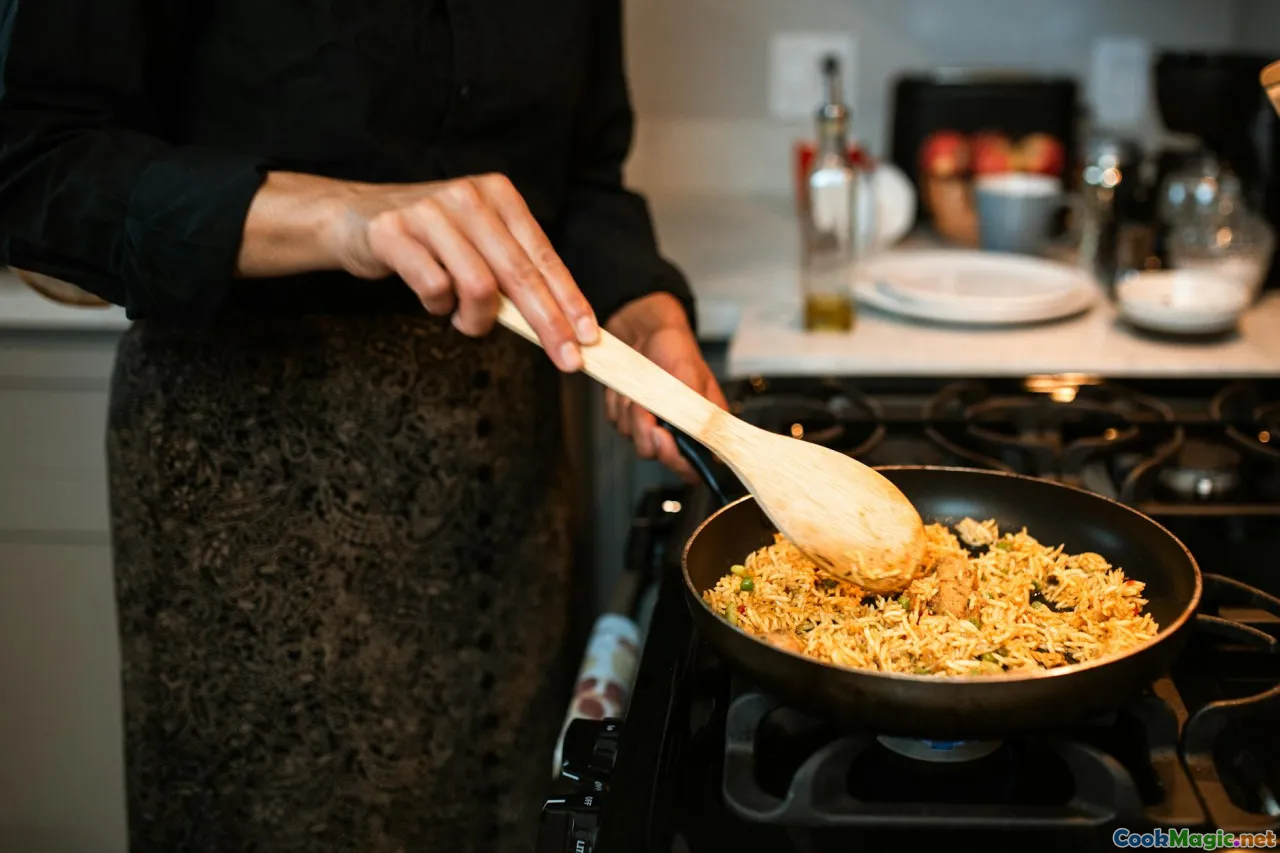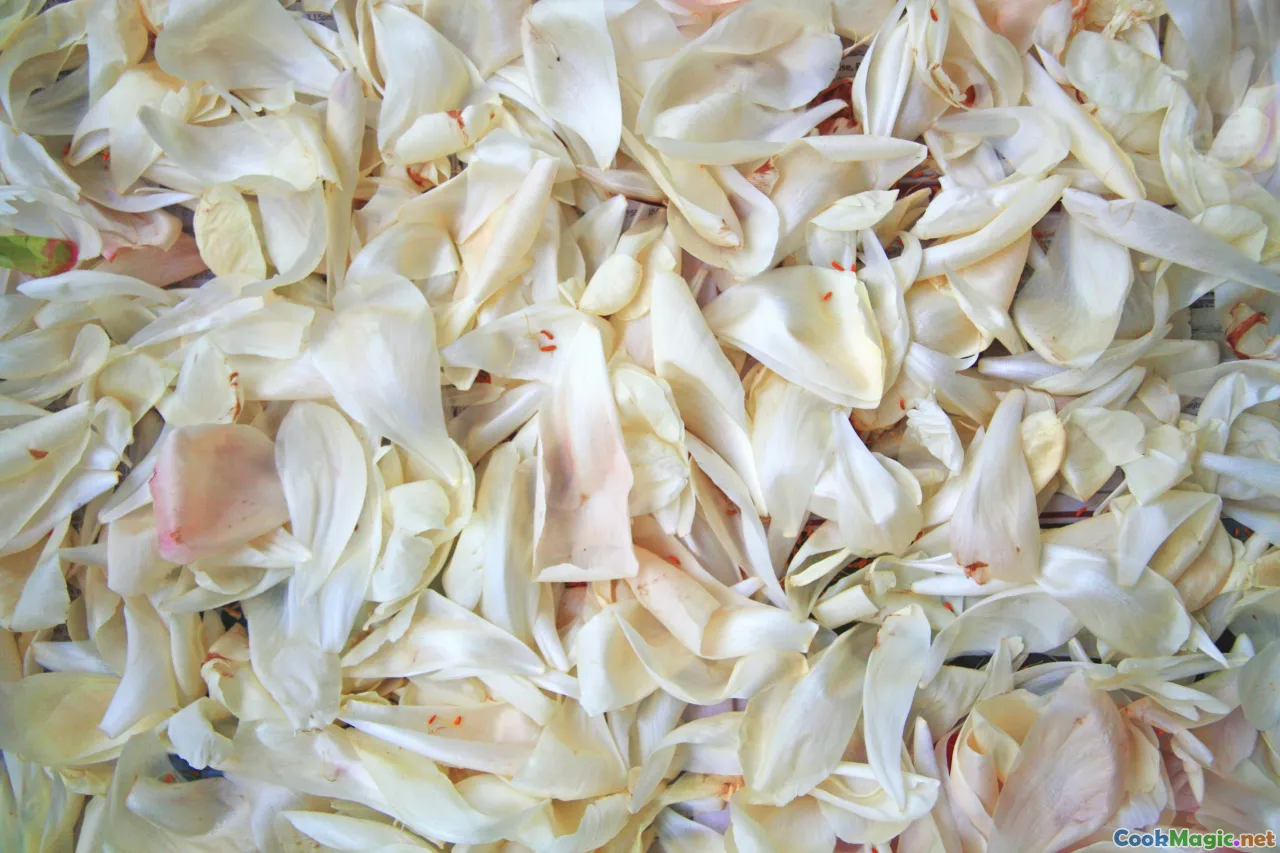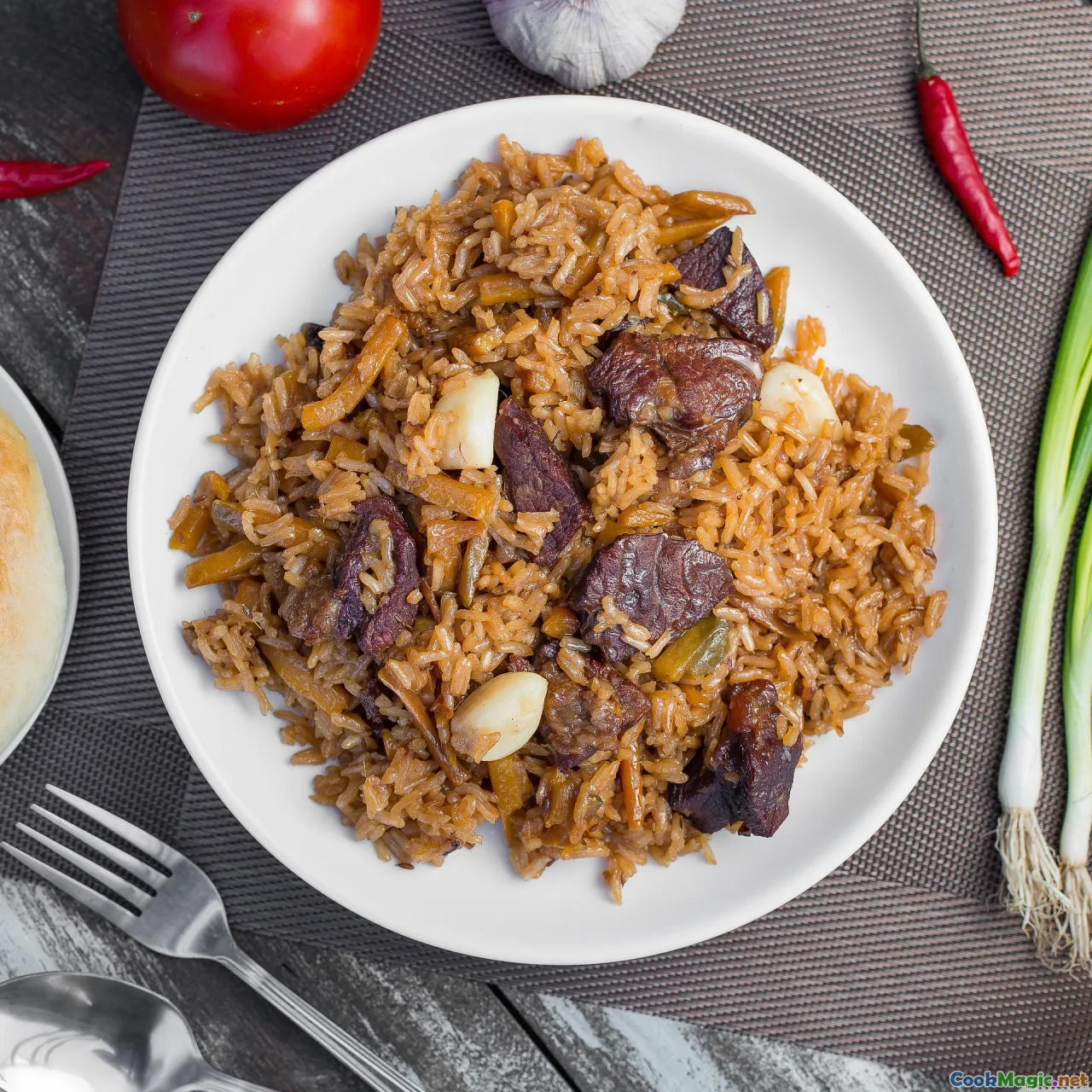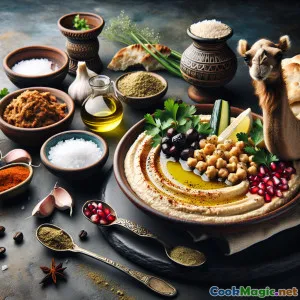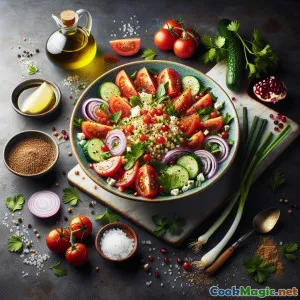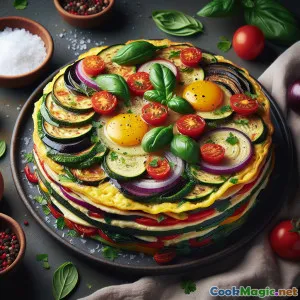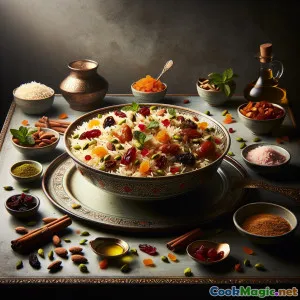
Xôi Gạo Hương Hoa Hồng Mecca: Cơm Thơm Phức Với Các Loại Hạt & Thảo Mộc
(Mecca Rosewater Pilaf: Fragrant Rice with Nuts & Herbs)
(0 Đánh giá)0
22
tháng 8 16, 2025
Báo cáo sự cố
Nguyên liệu
-
250 grams Gạo Basmati
(Long-grain preferred for fluffiness)
-
40 grams Bơ không muối
(Can replace with vegan alternative)
-
2 tbsp Dầu ô liu
(For a richer, aromatic base)
-
1 small Hành vàng
(Finely diced for sweetness)
-
1 piece Que hương
(Enhances perfumed notes)
-
1/2 tsp Bột thảo quả
(Warm spice profile)
-
1 tsp Muối
(Theo khẩu vị)
-
500 ml Nước nóng hoặc nước dùng rau củ
(More flavor if using broth)
-
2 tsp Nước hoa hồng
(Authentic Meccan flavor)
-
50 grams Nho khô vàng
(Can substitute with currants)
-
40 grams Hạnh nhân phẫu sợi
(Tướng nhẹ)
-
30 grams Hạnh nhân rang
(Sliced for texture)
-
30 grams Mơ khô
(Thái chỉ)
-
1 handful Bạc hà tươi
(Băm nhỏ để trang trí)
Lá hồng, As needed
(Long-grain preferred for fluffiness)
(Can replace with vegan alternative)
(For a richer, aromatic base)
(Finely diced for sweetness)
(Enhances perfumed notes)
(Warm spice profile)
(Theo khẩu vị)
(More flavor if using broth)
(Authentic Meccan flavor)
(Can substitute with currants)
(Tướng nhẹ)
(Sliced for texture)
(Thái chỉ)
(Băm nhỏ để trang trí)
Dinh dưỡng
- Khẩu phần: 4
- Kích thước khẩu phần: 1 bát (250g)
- Calories: 550 kcal
- Carbohydrates: 74 g
- Protein: 10 g
- Fat: 22 g
- Fiber: 5 g
- Sugar: 11 g
- Sodium: 870 mg
- Cholesterol: 20 mg
- Calcium: 82 mg
- Iron: 2.2 mg
Hướng dẫn
-
1 - Rinse the Rice:
Place the basmati rice in a fine-mesh sieve. Rinse thoroughly under cool running water until the water runs clear. Set aside to drain.
-
2 - Prepare Aromatics:
Finely chop the onion. Slice dried apricots into thin strips if not already done. Roughly chop fresh mint leaves.
-
3 - Sauté Base Ingredients:
Heat 2 tbsp olive oil and butter in a heavy-bottomed saucepan over medium heat. Add onion and sauté until soft and translucent, about 4 minutes. Stir in cinnamon stick and ground cardamom; cook for 1 minute until fragrant.
-
4 - Toast the Rice:
Add the rinsed, drained rice to the saucepan. Stir for about 2 minutes to coat grains in oil and toast lightly.
-
5 - Add Liquid and Fruit:
Pour in hot water (or vegetable broth), add salt, golden raisins, and julienned dried apricots. Stir to distribute ingredients evenly.
-
6 - Simmer Rice:
Bring to a gentle boil. Cover with a tight lid, reduce to low heat, and simmer for 13 minutes without disturbing.
-
7 - Finish with Rosewater and Nuts:
After 13 minutes, turn off the heat and pour rosewater evenly over the rice. Scatter toasted pistachios and almonds on top. Replace lid and let stand off heat for 5 minutes.
-
8 - Fluff and Garnish:
Remove cinnamon stick. Gently fluff rice with a fork, mixing in nuts and fruit. Transfer to serving bowls and garnish with chopped fresh mint and a few rose petals if desired.
Place the basmati rice in a fine-mesh sieve. Rinse thoroughly under cool running water until the water runs clear. Set aside to drain.
Finely chop the onion. Slice dried apricots into thin strips if not already done. Roughly chop fresh mint leaves.
Heat 2 tbsp olive oil and butter in a heavy-bottomed saucepan over medium heat. Add onion and sauté until soft and translucent, about 4 minutes. Stir in cinnamon stick and ground cardamom; cook for 1 minute until fragrant.
Add the rinsed, drained rice to the saucepan. Stir for about 2 minutes to coat grains in oil and toast lightly.
Pour in hot water (or vegetable broth), add salt, golden raisins, and julienned dried apricots. Stir to distribute ingredients evenly.
Bring to a gentle boil. Cover with a tight lid, reduce to low heat, and simmer for 13 minutes without disturbing.
After 13 minutes, turn off the heat and pour rosewater evenly over the rice. Scatter toasted pistachios and almonds on top. Replace lid and let stand off heat for 5 minutes.
Remove cinnamon stick. Gently fluff rice with a fork, mixing in nuts and fruit. Transfer to serving bowls and garnish with chopped fresh mint and a few rose petals if desired.
Thông tin thêm về: Xôi Gạo Hương Hoa Hồng Mecca: Cơm Thơm Phức Với Các Loại Hạt & Thảo Mộc
Historical and Cultural Significance
Mecca, one of Islam’s holiest cities located in Saudi Arabia, has long been a melting pot connecting Africa, Persia, South Asia, and Europe. Its pivotal role as a center for trade and pilgrimage created a vibrant and diverse culinary heritage, famous for hospitality and subtly layered flavors. One such legacy is the use of rosewater in savory and sweet preparations—a practice born out of Persia and Syria, then woven into Arabian kitchens.
This "Mecca Rosewater Pilaf" honors the city’s cosmopolitan roots while drawing a gentle bridge between Middle Eastern spice sensibilities and quintessentially English presentation. It is as much a recipe for the senses as for the palate: deeply perfumed and opulent, yet remarkably harmonious.
Unique Aspects
What sets this pilaf apart is its floral-heart from rosewater, resonating against the warmth of cardamom and cinnamon. The addition of dried fruit—golden raisins and apricots—brings a subtle civility; sweetness without excess, typically favored on feast tables or for special guests. Toasted pistachios and almonds pay tribute to the region’s adoration of nuts, offering nuance in both flavor and mouthfeel. A final crown of fresh mint and rose petals imparts a sparkle and freshness that make the pilaf as visually inviting as it is aromatic.
Compared to traditional English pilafs (often featuring lightly spiced or steamed rice), this recipe ventures eastward; straddling ancient Silk Road ingredients with techniques familiar to the quintessential English cook, such as gently toasting grains before simmering and layering garnishes at the end.
Tips and Notes
- Use the highest quality rosewater you can find—food grade and unsprayed—otherwise the aroma can be soapy or overpowering.
- If Basmati rice is not available, use any long-grain aromatic rice variety, though the texture will differ slightly.
- Make this pilaf vegan by simply omitting butter and using a vegan substitute or more olive oil.
- Allowing the rosewater to steam at the very end lends the most delicate and haunting fragrance. Avoid boiling rice after adding rosewater.
- Dried fruits can be lightly rehydrated in warm water or added straight to the pot, depending on which flavor intensity you wish (soft vs. chewy).
- The recipe pairs beautifully with grilled vegetables, braised lamb, or spicy chicken, though it can also stand alone as a main for festive vegetarian tables.
Personal Thoughts
There’s something almost ceremonial in preparing this pilaf: the washing of grains, toasting of spices, painting the kitchen with burnt sugar and flowers. Scattering mint and rose petals at the end evokes scenes of Meccan festivities—a hallowed cook’s gentle touch preparing for guests, where scent and memory linger after the meal is long done.
Creating the “Mecca Rosewater Pilaf” is more than combining ingredients; it is channeling respect for traditions both local and adopted. For the English cook, it presents an adventure in aromatics while leveraging tried-and-true techniques. For the seasoned global palate, it’s a reunion of spice, fruit, and edible blooms. Eat slowly; savor deeply—the journey is what you remember most.

